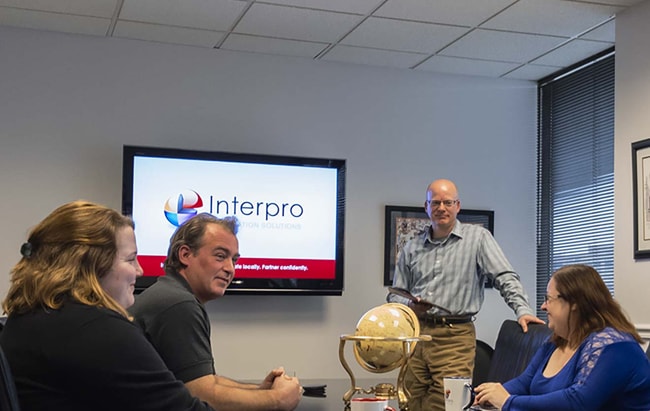
Language service providers, like most everything else, come in a variety of sizes, shapes, and flavors, each bringing something different to the table. What you need to determine is if you are better off working with a large, enterprise-level organization, or if your needs are better suited to working with a smaller agency. And maybe you don’t want to work with a company at all, preferring to deal directly with individuals such as freelance translation resources. Which route you eventually decide to take depends on a number of criteria, some of the most important of which we will explore here.
Does size matter?
Let’s try to categorize your options in terms of structure.
Freelance Translator: A freelance translator is someone who works independently. Freelance resources may work in pairs: one who translates and one who edits and proofreads.
Single-Language Vendor (SLV): An SLV is usually set up as a company, offering a wide range of translation services into one language. Services offered may include:
- translation, editing, proofreading, and QA
- file preparation and engineering
- project management
- desktop publishing
Multiple-Language Vendor (MLV): An MLV is usually set up as a company, offering a wide range of translation services into multiple languages, enabling its clients to concentrate all of their translation requests with one vendor, regardless of language. Services offered would include:
- translation, editing, proofreading, and QA
- file preparation and engineering
- project management
- desktop publishing
SLVs and MLVs vary in terms of size, and revenue is not the only indicator of how big a company is. For example, many of the larger companies provide products and/or miscellaneous IT consulting in addition to translation services, all of which usually get added to their total revenue number. A much more effective gauge of how large an LSP is will relate to production:
- What is the annual volume of words translated in “x” number of languages?
- How many total projects did the company cycle through in one year?
Benefits of working with a small-scale language service provider

Generally speaking, you will experience a more personal approach when working with a small company. You are more likely to receive personal attention with a small language service provider than with a language service provider that has thousands of active clients. A smaller company may be more flexible and will more easily plug into your existing workflow as an extension of your team.
Here are five points to seriously consider when determining which type of language service provider is best for your business.
-
Comfort level
What you feel comfortable with is a huge factor in who you decide to work with. A one-on-one working relationship with a dedicated freelance translator is akin to having your own personal shopper. On the other hand, you may feel better served by a larger organization with multiple resources. Either way, don’t discount “comfort level” when looking for your long-term solution.
-
Technical capabilities
One of the most critical factors in deciding who you would like to work with depends in large part on what you are translating. For example, the content you need to translate from English to Spanish may be contained within:
- your software’s user interface
- an eLearning course
- a section of your website
- your product’s help system
- your product’s packaging
- user documentation
You should make sure your language service provider has experience in translating a wide variety of content located within multiple types of platforms. For example, if your documentation is authored in Adobe InDesign, it would be useful for you to know that very few freelance translators work directly in InDesign.
-
Subject Matter Experts (SMEs)
If your company is very specialized in one defined area (i.e., nuclear medicine), you may want to select a language service provider that only translates nuclear medicine-specific content. There are freelance SMEs that focus on very well defined areas. There are also single language service providers and multiple language service providers that have one or two specific concentrations.
Most MLVs will have SMEs in a multitude of subject areas, so if your organization has translation needs spanning multiple disciplines, it would most likely benefit you to work with an MLV.
-
Linguistic (and other) capabilities
How many languages do you need to make your content available in? If English to Spanish is your only requirement, the freelance translator option or an SLV can work. However, if you also need Dutch, Hindi, Japanese, Brazilian Portuguese, and Canadian French versions of your content, you are probably going to want to work with an MLV. An MLV will have linguistic resources you need, including project managers, desktop publishing specialists, and a technically oriented staff to assist you.
An advantage to working with a language service provider that has multiple capabilities is that you will usually have only one or two points of contact to manage a wide span of projects, languages, and tasks.
Think about the logistics involved in a 12-language technical documentation translation project that also requires multilingual desktop publishing (DTP) and includes graphics localization.

If you were to work with SLVs or freelancers, you would be managing 12 separate translation, editing, proofreading, multilingual DTP, and quality assurance (QA) projects, working with 12 separate sets of linguistic resources. The exact total number of resources you end up working with will most likely depend on your delivery requirements. Conversely, when working with an MLV, you would work with one account executive (to manage the quotation process), and one project manager (who would manage everything else).
-
Cost of language service providers
When selecting a language service provider, it is important to understand that freelance resources may be the most economically advantageous for you and offer flexible payment solutions. A freelance translator will most likely provide multiple rounds of changes at no additional charge.
Language service providers who specialize in one specific area will be on the higher end of the pay scale, since they are a rare animal, have less competition, and are perceived as industry experts in their chosen field.
Pricing with SLVs is generally considered “middle of the road.” Since they concentrate on one specific language pair, they achieve economies of scale.
When working with MLVs (brick and mortar companies with salaried employees, overhead, equipment, etc.), the price ranges can vary. If you have large volumes of content to be translated in multiple languages, you will find that MLVs, regardless of size, will do whatever they can to work within your budget constraints. Very often they will provide services for one language at cost or even at a slight loss, knowing that they can make up the difference on one or more of the other languages being contracted for.
Commonly, it will be more expensive to work with an MLV than with an SLV or freelance translator, as MLVs will have more fixed costs and overhead than the other two options.
Finally, don’t forget the old saying “you get what you pay for” still holds true as much as today as it always has.
Conclusion
Whether you end up working with a large organization or with a small to mid-size agency will depend on a variety of factors, some of which have been covered in this article.
Working with a small to mid-size language service provider may work nicely since you will likely be receiving more personal attention. Or, you may put bigger stock in working with a large language service provider that has coverage in multiple geographies. Whatever your situation, there is a range of options to choose from. Spend the time to figure out what your needs are, add to that your comfort level concerning how you like to work and with whom, then take into consideration any budgetary constraints you may have. If you do this, you have a good chance of selecting the right language service provider to partner with.

